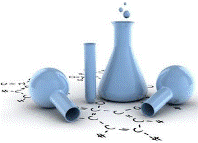Chemical and Biomolecular Engineering, Department of
Date of this Version
2015
Document Type
Article
Citation
PLoS ONE 10(8) 2015
Abstract
Titanium dioxide (TiO2) nanoparticles are one of the most highly manufactured and employed nanomaterials in the world with applications in copious industrial and consumer products. The liver is a major accumulation site for many nanoparticles, including TiO2, directly through intentional exposure or indirectly through unintentional ingestion via water, food or animals and increased environmental contamination. Growing concerns over the current usage of TiO2 coupled with the lack of mechanistic understanding of its potential health risk is the motivation for this study. Here we determined the toxic effect of three different TiO2 nanoparticles (commercially available rutile, anatase and P25) on primary rat hepatocytes. Specifically, we evaluated events related to hepatocyte functions and mitochondrial dynamics: (1) urea and albumin synthesis using colorimetric and ELISA assays, respectively; (2) redox signaling mechanisms by measuring reactive oxygen species (ROS) production, manganese superoxide dismutase (MnSOD) activity and mitochondrial membrane potential (MMP); (3) OPA1 and Mfn-1 expression that mediates the mitochondrial dynamics by PCR; and (4) mitochondrial morphology by MitoTracker Green FM staining. All three TiO2 nanoparticles induced a significant loss (p < 0.05) in hepatocyte functions even at concentrations as low as 50 ppm with commercially used P25 causing maximum damage. TiO2 nanoparticles induced a strong oxidative stress in primary hepatocytes. TiO2 nanoparticles exposure also resulted in morphological changes in mitochondria and substantial loss in the fusion process, thus impairing the mitochondrial dynamics. Although this study demonstrated that TiO2 nanoparticles exposure resulted in substantial damage to primary hepatocytes, more in vitro and in vivo studies are required to determine the complete toxicological mechanism in primary hepatocytes and subsequently liver function.



Comments
© 2015 Natarajan et al. Used by permission